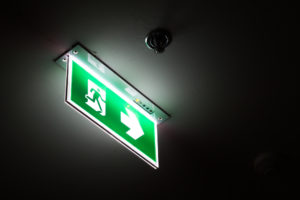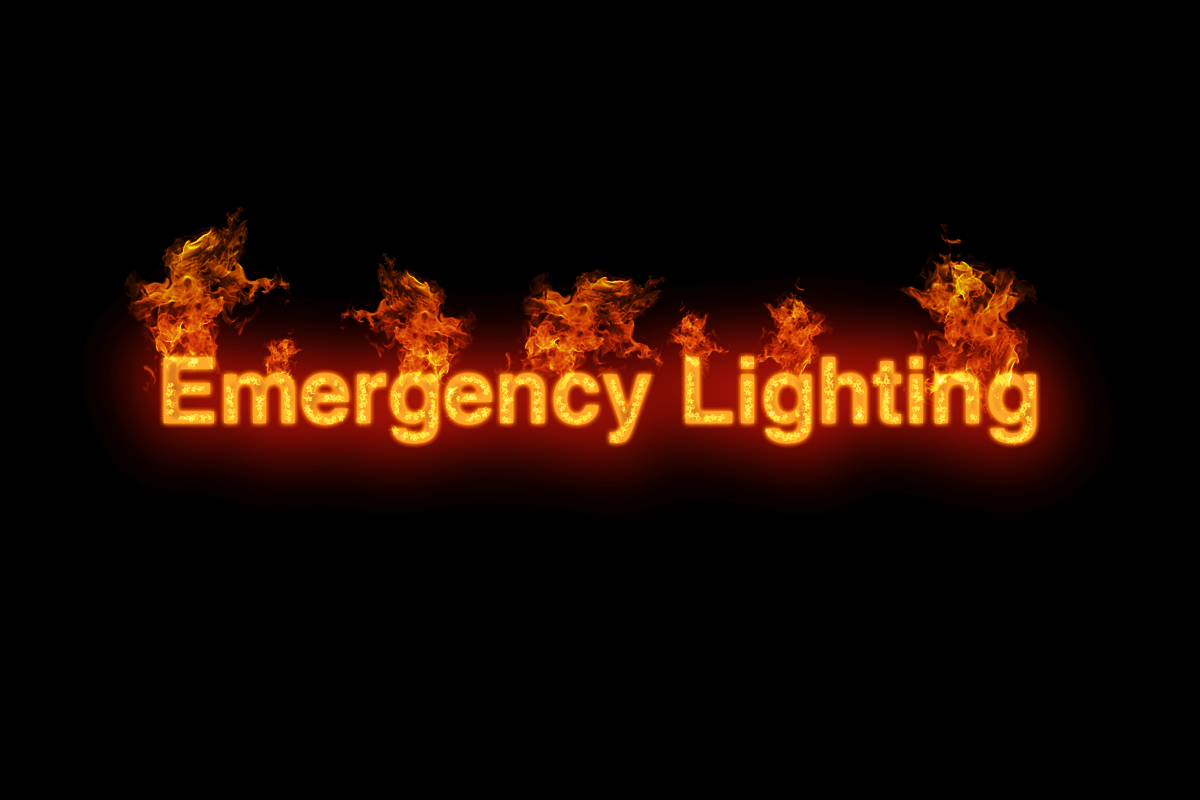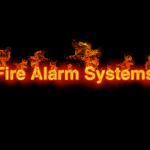Emergency lighting is a type of lighting used in emergencies when normal electrical illumination fails due to mains power supply failure either due to a power cut or a fire. An abrupt loss of power in buildings makes them unsafe for occupants and might even lead to panic.
In the event of a power cut, most emergency lighting systems will automatically come on to illuminate specific areas of a building so that occupants have an easier time safely evacuating the building.
The British Standard provides emergency lighting designers’ requirements when installing emergency lighting fixtures. The BS 5266-1 relates not only to colleges, schools, nursing homes, hospitals, licensed premises, clubs, hotels, shops, museums, offices but also multi-storey buildings.
While the standard recommends the emergency lighting systems to install in different types of buildings and their backup durations, keep in mind that standards only define the minimum requirements and that higher specifications might be needed for some applications.
Contents
- 1 What Are the Current Laws on Emergency Lighting in the UK?
- 2 What Is Emergency Lighting?
- 3 What Are the Types of Emergency Lighting?
- 4 Why Is Emergency Lighting Important?
- 5 Emergency Lighting Power Supply Types
- 6 What’s the Difference Between Non-maintained and Maintained Emergency Lights?
- 7 Where Do You Need to Place Emergency Lighting?
- 8 How Long Does Emergency Lighting Need to Stay On?
- 9 How Bright Do Emergency Lighting Systems Have to Be?
- 10 How Is Emergency Lighting Serviced and Tested?
- 11 How Often Should Emergency Lighting Be Tested and Serviced?
What Are the Current Laws on Emergency Lighting in the UK?
Article 14 of the The Regulatory Reform (Fire Safety) Order 2005 requires the installation of emergency lighting and states that:
Emergency routes and exits must be indicated by signs; and emergency routes and exits requiring illumination must be provided with emergency lighting of adequate intensity in the case of failure of their normal lighting.
Responsibility for conforming to the requirements set by the standards lies on the ‘responsible person”. In workplaces, that’s the employer and anyone who has control over any part of the building, i.e., the owner or occupier. In all other buildings, the people or person who controls the building is responsible.
Some of the Emergency Lighting requirements the ‘responsible people’ have to adhere to, per the British Standard, include:
- Infill lighting, emergency luminaries, and exit signage must be carefully and well-positioned to provide enough lighting for occupants to safely exit a building when the normal mains supply fails
- Escape routes and emergency exits should all have illuminated signage that unambiguously indicates the route of escape to a safety point
- In instances where the emergency exit is not directly visible, illuminated directional signs or a series of signs must be provided to guide occupants to the nearest emergency exit
- Every direction change leading to an escape door must be illuminated
- The minimum duration for an emergency lighting system to stay on is one hour – once power fails, all emergency lights must stay on for at least an hour
- For buildings that aren’t evacuated immediately or that will be reoccupied once supply is restored, the minimum duration for emergency lighting is three hours
- Escape lighting luminaires should be installed near (within 2 meters of):
- All exit doors
- Areas of a building where there’s a need to emphasise potential danger (such as intersections of corridors, flights of stairs, and changes of level)
- Fire alarm call points
- First-aid equipment
- Electrical distribution boards
- Fire alarm panels
- Fire extinguishers
What Is Emergency Lighting?
 Emergency lighting is any type of lighting that’s used to provide illumination in an emergency when the mains power supply fails, either due to a cut or fire. The term refers to lighting that comes on automatically when the power supply to your normal lighting fixtures fails.
Emergency lighting is any type of lighting that’s used to provide illumination in an emergency when the mains power supply fails, either due to a cut or fire. The term refers to lighting that comes on automatically when the power supply to your normal lighting fixtures fails.
What Are the Types of Emergency Lighting?
Emergency lighting can be sub-divided into two categories: emergency lighting and standby lighting.
Emergency Escape Lighting
Escape lighting refers to the part of any emergency lighting system that illuminates the way for occupants to evacuate a building safely or attempts to lessen the risk of injury by lighting up an area. It’s part of a building’s fire safety provision and is a requirement of The Regulatory Reform Order of 2005.
Emergency escape lighting itself is sub-divided into three different categories. These are
- Escape route lighting: Identifies a building’s escape route and ensure its well-lit. Includes emergency lighting such as emergency lighting bulkheads and illuminated fire exit signs.
- Open area lighting: Ensures that there’s enough light for the people inside a building to reach an area where they can identify an escape route.
- High-Risk Task Area Lighting: Provides illumination for the wellbeing and safety of persons involved in potentially dangerous situations or processes and allows for the proper shutdown of machinery and equipment for the safety of the operators and those occupying the premises.
Standby Lighting
This refers to the part of any emergency lighting system that makes it possible for normal activities to continue as usual. The thing about standby lighting is that it isn’t a legal requirement. The need for this type of lighting often depends on whether or not a facility needs it.
Why Is Emergency Lighting Important?
Emergency lighting is crucial for several reasons, with the main one being fire safety. A power cut might plunge a building into darkness, causing panic amongst the occupants.
Furthermore, when visibility is poor, the chances of people hurting themselves as they try to evacuate the building increases considerably. Emergency lights illuminate pathways to exits so that the occupants of a building can make their way out safely and quickly.
Emergency Lighting Power Supply Types
Emergency lighting systems are powered by either:
- Single Point or Self-contained Power Source
- Central Battery Source
The main advantage of a single point or self-contained power source is that installation is faster and cheaper, and there is no need for additional emergency lighting wiring or hardware. However, it’s worth noting that this option typically has a limited battery life and can be affected by local conditions like humidity.
On the other hand, central battery source systems are more straightforward when it comes to maintenance and testing but are quite expensive to set up.
What’s the Difference Between Non-maintained and Maintained Emergency Lights?
Maintained Lighting
Maintained emergency lights are always on and are mains powered. These lights are typically part of a room’s normal lighting system but continue to stay lit in emergencies like during a power cut.
 During such events, the lights get powered by a backup battery, determining how long they’ll stay on before going off. This emergency lighting system is typically used in non-residential buildings like shopping centres, cinemas, leisure centres, etc.
During such events, the lights get powered by a backup battery, determining how long they’ll stay on before going off. This emergency lighting system is typically used in non-residential buildings like shopping centres, cinemas, leisure centres, etc.
In public buildings like bars, theatres, and cinemas, where normal lighting systems are often dimmed, maintained luminaries are compulsory.
Maintained lighting includes recessed downlights, fire exit signs, and bulkhead lighting. Most building owners now opt to work with LED lights to reduce running costs as they consume less energy than other options.
Non-Maintained Lighting
Non-Maintained lights usually only come on for a certain duration when supply to standard lighting fixtures fails.
These lights are typically used in buildings usually well-lit when occupied, such as buildings that house offices. Non-maintained lighting systems are powered by batteries charged by a constant trickle of power from the mains. The batteries should have sufficient charge to stay lit for a minimum of 3 hours or more in the event mains power fails.
Where Do You Need to Place Emergency Lighting?
Emergency lighting position matters a lot as incorrect positioning could pose some significant risks to the occupants. Lighting and signs should be placed in such a way that they illuminate exits and escape routes from a building.
Regulations state that building owners should use illuminated signs in place of emergency lighting luminaires when the exit isn’t easily identifiable by occupants.
Businesses must also ensure that problem areas are well-lit. These areas include:
- Stairwells
- Changes in the direction of the escape route
- Intersections in corridors
- Toilet areas (greater than 8m2)
- Places where the floor level changes
You aren’t required to provide lighting for all the items in the list above. However, you should make sure that all problem areas receive enough light for occupants to make their way out of the premises.
Most of the companies that make luminaires specify the distance between emergency lighting fixtures for the optimal illumination of the building.
How Long Does Emergency Lighting Need to Stay On?
Emergency escape lighting must remain on for at least three hours in buildings that occupants cannot evacuate immediately, like hotels.
The minimum illumination duration falls to one hour in buildings where occupants can evacuate the building quickly and do not have to reoccupy it right away.
Organisations are required to test their emergency lighting at least once a year for the full test duration to ensure that they are still capable of providing emergency lighting for the period required. If a system fails the test, then the backup battery will have to be replaced.
How Bright Do Emergency Lighting Systems Have to Be?
 British Standards 5266 suggests that emergency lighting be installed horizontally at floor level along an escape route’s centre line not less than 1-lux, and .5-lux for anti-panic areas, to exclude a .5-metre border around the escape route.
British Standards 5266 suggests that emergency lighting be installed horizontally at floor level along an escape route’s centre line not less than 1-lux, and .5-lux for anti-panic areas, to exclude a .5-metre border around the escape route.
For escape routes that are up to 2 metres wide, 50 per cent of the route’s width should be well-lit to a minimum of 1-lux. Even wider escape routes may be treated as several two-meter wide bands.
The degree of illumination must be closely related to those who occupy the building and the type of building in question. Special attention must be given to crowded venues such as supermarkets, nightclubs, pubs, hospitals, and homes for the elderly.
The level of illumination in certain areas and rooms within a premise will vary greatly depending on how they are used.
How Is Emergency Lighting Serviced and Tested?
Organisations that fall under emergency lighting testing regulations must have and follow a servicing schedule to ensure that the system performs properly when mains power fails.
BS 5266-8 / BS EN 50172 discuss the minimum testing provision levels, depending on the building you operate. As a business, you need to ensure that you have a responsible person in your organisation to oversee the schedule.
Organisations can conduct either automatic or manual tests. Manual testing involves physically cutting off the mains supply to see if the emergency lighting system operates as intended.
Automatic testing involves using a unique self-testing emergency lighting system that tells you if your system has a problem.
How Often Should Emergency Lighting Be Tested and Serviced?
Emergency lighting testing falls into three different categories:
Daily
Involves visually inspecting central power supply indicators to make sure the system is fully operational. However, this only applies to systems powered by a central battery.
Monthly
BS 5266-8 / BS EN 50172 dictate that the responsible persons must test all the emergency lighting systems in a building at least once a month. Emergency lighting signage guidelines require all signs and luminaries to illuminate and be present and clean. The monthly test is typically a quick ‘flick’ test performed to ensure that the emergency lighting switches work.
Annually
Annual testing is done to check if the lights remain on for the duration recommended by British Standard. All the lights must continue to function as they should once the test is over. Those that do not must be replaced.




